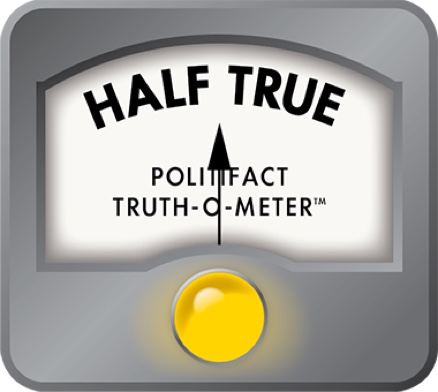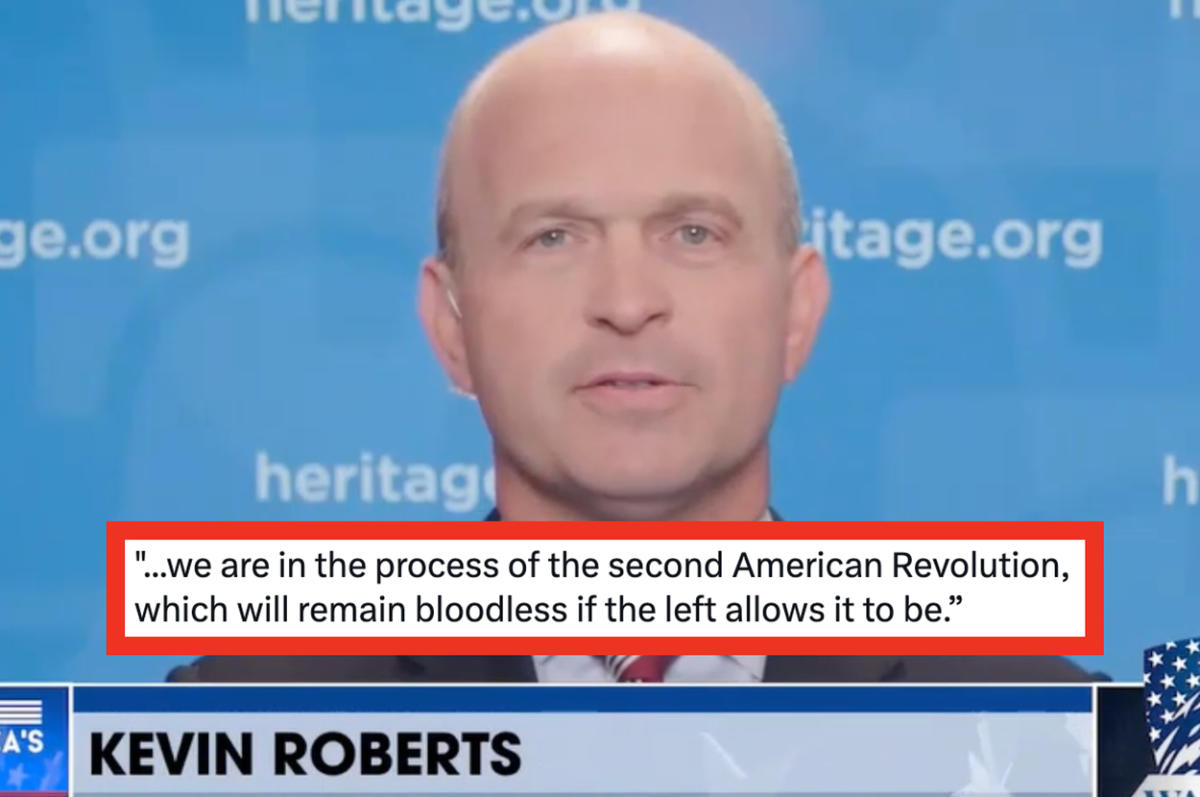Originally at politifact.com
Vice President Kamala Harris’ new campaign attack ad shuffles through the pages of Project 2025, calling it the “922-page blueprint to make Donald Trump the most powerful president ever.”
Trump and his campaign have distanced themselves from the conservative presidential transition plan but Democrats continue to link him to it, highlighting Trump’s past ties to many of its contributors.
The narrator in Harris’ ad “Control” repeats some claims about the document that we have covered before, such as “requiring the government to monitor women’s pregnancies” (it requires states to report abortions and miscarriages) and imposing “severe cuts to Medicare and Social Security.” (Project 2025 calls for changes to Medicare, but does not support Social Security cuts.)
The narrator says the manual calls for “eliminating the Department of Education and defunding K-12 schools.”
We have covered how Project 2025 dismantles the U.S. Department of Education as part of a push to have more “limited” federal involvement in school policy. Trump supports that move. For this fact-check, we wanted to know how Project 2025 would affect federal funding for public schools.
Losing federal dollars wouldn’t zero out budgets for most districts.
Public schools, with some exceptions, receive the majority of their funding from local and state governments. Before the COVID-19 pandemic, the federal government provided around 8% to 10% of K-12 school funding. COVID-19 relief funding pushed the share to about 14% in 2022, but it has expired.
But the federal contribution still translates into billions of dollars, and states and school districts that receive a higher share of those dollars would feel a disproportionate hit.
The Harris campaign pointed PolitiFact to Department of Education K-12 spending data. In fiscal year 2023, the agency received $79.6 billion for K-12 funding; the money was earmarked primarily for programs to support special education and education for disadvantaged, low-income students, among other initiatives. The department’s 2023 budget — $274 billion — includes a large chunk for student loans and college aid, which includes income-based aid such as Pell Grants.
In an emailed statement, Project 2025 told PolitiFact the fact that school budgets rely on federal money for only a small share of their funding means cutting the department “hardly defunds schools.” The project proposes transitioning some programs to the states over 10 years and cancels others it deems ineffective.
In a video about his education policy, Trump promised to shutter the department and “to send all education work and needs back to the states.” He did not say how federal dollars would be redirected. His Republican National Convention platform also calls to cut federal funding “for any school pushing critical race theory, radical gender ideology, and other inappropriate racial, sexual or political content.”
Trump’s campaign didn’t say how he would redirect lost federal dollars. Press secretary Karoline Leavitt said his administration will improve “academic excellence for all students from all educational backgrounds” by “increasing access to school choice, empowering parents to have a voice in their child’s education and supporting good schools and teachers.”
Project 2025 calls for dismantling the Department of Education and transferring its Title I program, which helps fund schools with large populations of K-12 students from low-income families, to the Department of Health and Human Services. The plan aims to provide the funding in a block grant, giving states more flexibility on how to spend the money by being less prescriptive. The proposal phases out Title I over 10 years, shifting the funding responsibility to the states.
The plan recommends a similar move for the department’s Individuals with Disabilities Education Act funding, converting the special education money that now goes to schools into HHS-run block grants for states to distribute to parents.
What would happen next is hard to say, because state education spending varies widely.
“Some states might fund their own programs to help students in ways that are similar to what the federal programs do today,” Holly Kurtz, director at EdWeek Research Center, and Sterling Lloyd, the center’s assistant director, told PolitiFact in a joint email. “Other states could choose to go in a different direction with their spending.”
Presidents could not do this on their own. Abolishing the department would require an act of Congress and bipartisan support, which has proved a long shot.
“Congress is one that decides the federal education budget, and the funding that’s in there is pretty popular on both sides of the aisle,” said Marguerite Roza, director of Georgetown University’s Edunomics Lab. “States can always say no thank you to federal funds and rules, and so far none have. Not one.”
Trump made a similar campaign pledge to reduce the Education Department in 2016, but curtailed his plans once in office. His first budget for the 2018 fiscal year proposed cutting the department’s budget by 13%, rather than calling for its elimination. Trump proposed similar spending cuts in his next two budgets; none were approved.
The majority of K-12 public school funding money comes from state and local governments through a mix of state income taxes, state sales taxes and local property taxes.
The amount of federal money flowing to schools varies across states and school districts. For example, Arkansas’ federal share is 20%, South Dakota’s is 21% and Mississippi’s is 23%. New York’s is 7% and Massachusetts’ is 9%.
Districts that serve more students from low-income families and students with disabilities would feel the brunt of federal funding cuts more severely than districts that serve fewer of those students.
The hit could be substantial in large school districts such as Detroit, which has a 48% federal share, and Oklahoma City, where the share is 34%.
Beyond providing some funding to schools, the Education Department also houses the National Center for Education Statistics, the nationwide data source on schools, and its Office for Civil Rights, which investigates thousands of allegations of discrimination and harassment in schools annually.
Project 2025 would direct other agencies to absorb those responsibilities. It would move the school assessments and other research functions to the U.S. Census Bureau and have the Justice Department’s Office for Civil Rights absorb the Education Department’s office. Critics say these groups are already significantly underfunded.
The Education Department’s Office for Civil Rights gets “thousands of civil rights complaints each year that deal with allegations of race, sex and disability-based discrimination in schools across the country,” said Robert Kim, executive director at the Education Law Center, a legal advocacy organization for public education. “The office has been really underfunded for decades now and the work has exponentially increased.”
Does cutting the federal share amount of “defunding” schools, as Harris’ ad says? The word can mean anything from cutting funds for schools to gutting it completely. Merriam-Webster’s definition of the word — “to withdraw funding from” — fits for Project 2025’s proposal.
“If the viewer of the advertisement interprets ‘defund’ to mean that schools would receive no more money, period, under Project 2025, then that is false,” Kurtz and Sterling said. “However, if the viewer interprets ‘defund’ to mean a reduction in funding to K12 schools, then the advertisement is true because Project 2025 does include initiatives that would reduce funding for K12 schools.”
Sean Corcoran, a Vanderbilt University public policy and education professor, said shuttering the department “would go far to defund a lot of schools.”
Frederick Hess, senior fellow and education policy studies director at the conservative American Enterprise Institute, said Project 2025 would “absolutely not” defund schools.
“Just for starters, 90% of K-12 educational funding is state and local,” Hess said. “Would Trump or Project 2025 marginally trim the rate of increase in public school spending? Possibly. (Project 2025) would block grant Title I (about 2% of school spending) and then theoretically keep reducing it over a decade.”
A Harris campaign ad said Project 2025 would defund K-12 schools.
Eliminating the Department of Education would phase out some, if not all, federal funding for public K-12 schools and return that responsibility to the states.
The federal government provided about 14% of K-12 funding in fiscal year 2022 with added COVID-19 funding that has expired. Most money goes to programs to support disadvantaged, low-income students and students with disabilities.
The majority of schools receive most of their funds from state and local sources, education policy experts noted that some states and districts receive a greater share of federal aid and could face greater losses from the proposal.
The ad’s statement is partially accurate but leaves out important details or takes things out of context. We rate it Half True.
RELATED: How accurate are warnings by Democrats, Kamala Harris about Donald Trump’s ‘Project 2025 agenda?’
Read the Original Story





